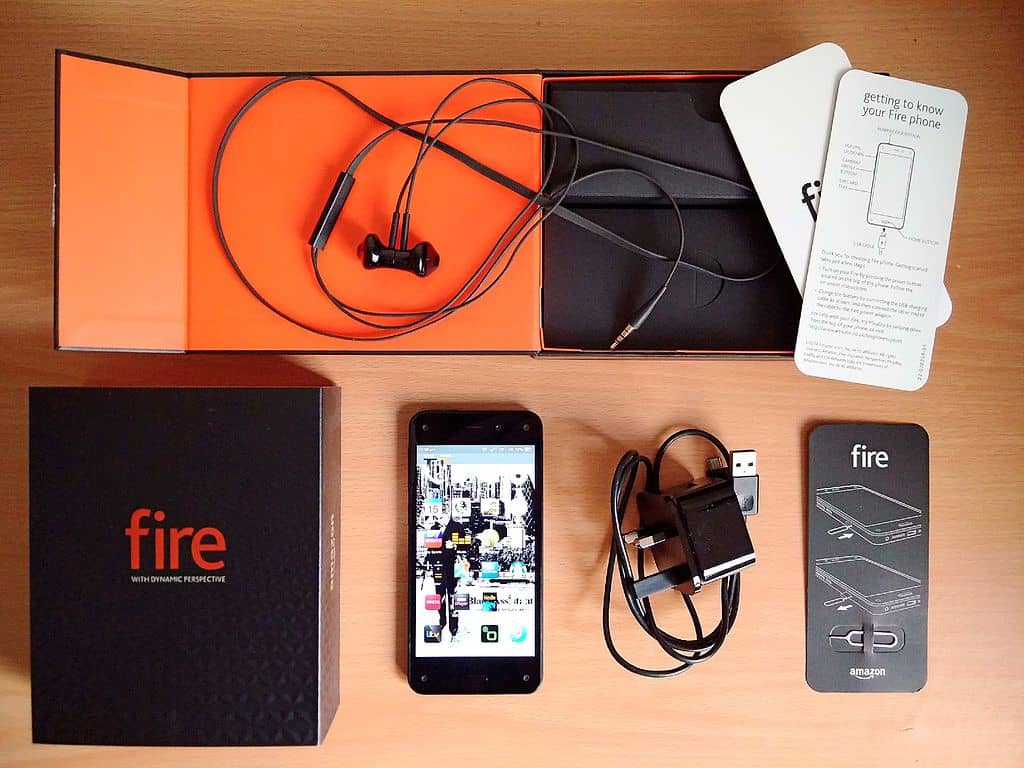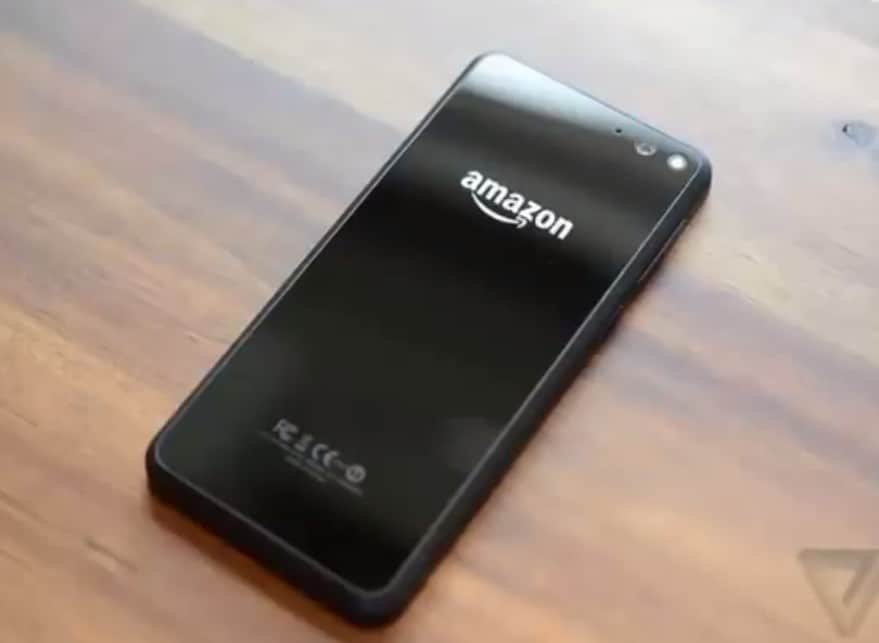Some technologies enjoy moderate success before they eventually tank. Others stick around for decades before fading into oblivion. But who could forget the ones that crash and burn within a few months? This was the unfortunate case of the Fire Phone, Amazon‘s first and only attempt at winning the smartphone wars.
In an incredibly saturated market with bestsellers, the Fire Phone hoped to triumph over the likes of the Apple iPhone, the Samsung Galaxy, the Google Pixel, and the rest. Unfortunately for Amazon, they never even stood a chance. Amazon had been quite successful with its Fire tablets, Echo smart assistants, and Fire TVs but couldn’t replicate the same with Fire Phone.
So, what initially made Fire Phone a contender? Who was it popular with? What were its specs and product history? We’ll deep dive into these details. Hopefully, you’ll finally grasp why exactly the Fire Phone failed.
The Significance of the Fire Phone

While little is known of Fire Phone’s eventual failure, there was no reason to believe it would be anything but incredibly successful in 2014. At that time, the Kindle Fire tablet had been around for three years and had seen spectacular sales. The Fire tablet had even helped Amazon beat its quarterly estimates and even boosted the company’s stock prices in the first quarter of 2012.
Unlike other tech companies, Amazon rarely discloses its sales figures. Even so, data analysts always have their methods for making estimates. Based on Fire tablet’s chart-topping success and the numbers reported by competitors in the second and third spots, Amazon likely sold close to five million units in the month after its debut in November 2011. By December 2012, Amazon was selling over a million Fire tablets weekly. A smartphone version of the Fire tablet seemed like a no-brainer, right? Well…
Released in June of 2014, the Fire Phone boasted features that couldn’t be found on its rivals The most impressive was its so-called Dynamic Perspective. The 3D display used four front-facing cameras and a gyroscope to adjust the user interface as the device was moved, creating the illusion of three-dimensional depth.
In addition to its Dynamic Perspective, the Fire Phone came with distinct Amazon features like X-Ray, which could identify and define information about films, television, music, and more. Mayday, an around-the-clock customer service tool, was another unique feature. Firefly, which offered ways to purchase items on Amazon based on the words, sounds, and objects detected by the phone, was another.
Fire Phone’s Reception From Critics
While the Fire tablet enjoyed initial success, the Fire Phone was met with very mixed reviews. Critics took issue with its high price, lackluster OS, unimpressive specs, and exclusivity to AT&T.
Whatever praise Fire Phone had garnered because of its 3D display and Firefly feature was quickly overshadowed by the stinging reviews. Beyond its technological capabilities, some had problems with the physicality of the device itself. It felt cheap and came with a pair of earbuds that couldn’t match up iPhone’s. What’s more, its battery couldn’t even last an entire day.
Critics weren’t the only ones to take a swipe at Fire Phone’s most integral components. Consumers kept the phone in the top spot on Amazon’s bestseller list for only a couple of weeks before it began to plummet down the charts. That’s when stock prices began to fall, AT&T stores began to worry, and Amazon went into panic mode. While the company is unlikely to release Fire Phone’s abysmal sales figures, some estimated that less than 40,000 Fire Phones were sold.
Fire Phone Specs
| Name | Fire Phone |
| Brand | Amazon Fire |
| Operating System | Fire OS |
| First Released | July 25th, 2014 |
| Price | $649-$749 |
| System on a Chip | Qualcomm Snapdragon 800 |
| Memory | 2 GB RAM |
| Storage | 32, 64 GB |
| CPU | 2.26 GHz quad-core Krait 400 |
| GPU | Adreno 330 |
| Display | 4.7-inch IPS LCD; Gorilla Glass 3; 1280×720 px |
| Camera | 13 MP (rear); 2.1 MP (front) |
| Discontinued | August 27th, 2015 |
Fire Phone: The Complete History

When the Kindle Fire hit the market in the fall of 2011, the Fire Phone was already in the works. In fact, development had been going on for over a year at that point. It’s rumored that Amazon began work in 2010, first showing AT&T a rudimentary prototype as soon as 2011. For context, Apple had just announced the iPhone 4. It’s no surprise Jeff Bezos wanted in on the kind of sales figures Steve Jobs was seeing.
As the Kindle Fire tablet continued to rake in the dough, developers tirelessly worked behind the scenes to bring the Fire Phone to life. According to reports, Bezos took a remarkable hands-on approach to the phone’s development. He reportedly wanted every decision, no matter how big or small, to be run by his desk to ensure every last component was flawless.
While the company remained hush-hush about the phone in public, testing of the Fire Phone took place behind the scenes throughout 2012. By 2013, it became harder for Amazon to keep their smartphone a secret. Reports were leaking left and right over who Amazon might be working with: HTC, HP, AT&T. Amazon denied the rumors despite the many half-truths that were out there surrounding the phone.
The following year, Amazon made it official: The Fire Phone was real, and it was available for pre-order the same day it was announced. Jeff Bezos made the announcement himself at a huge event at Seattle’s Fremont Theatre, offering a free year of Amazon Prime and a thousand Amazon coins with the purchase of the phone. A month later, in July 2014, the phone was officially up for sale.
Early Signs of Imminent Failure
It didn’t take long for Jeff Bezos’s somewhat ridiculous ideas to frustrate developers. Bezos was asking for features that just weren’t possible at the time. He wanted payments to be contactless. Bezos pushed for interactions to be hands-free. He even requested for users to be able to navigate through the phone with gestures in mid-air.
Arguably most absurd was Bezos’s request for the device to respond to different pressures and grips applied to the physical body of the phone itself. If there was this much trouble during the phone’s development, what would it take for the phone to make it to market?
While it eventually came to fruition — against all odds as it seemed — the Fire Phone was far from out of the woods by the time it hit the market in the summer of 2014. It could only manage to top Amazon charts for a couple of weeks before it began to fall. And fall it did.
Numbers were even worse in AT&T stores where the phone was exclusively sold. Stores spoke of little to no sales nationwide, with people being more curious about the device than anything. Curiosity doesn’t translate to sales, though, especially when those customers turned around and bought one of the Fire Phone’s direct competitors like the iPhone or the Samsung Galaxy.
The Eventual Demise of the Fire Phone
While the Fire tablet never stopped bringing in impressive numbers year after year, it only took the Fire Phone a matter of days to become an utter failure. Judging by ad impression in the weeks that followed its 2014 release, estimates put the phone’s market share at a tragic 0.02%. This meager percentage translates to less than 35,000 phones sold.
As mentioned above, Amazon rarely gives out its sales numbers for even the most successful products. There’s absolutely no way the company would ever intimate just how badly the Fire Phone failed by releasing its abysmal sales figures.
The ultimate key to understanding the demise of the Fire Phone lies in the company’s stock. In the third quarter of 2014, only a few months after the Fire Phone’s launch, the company had taken a 170 million dollar hit. By the time the phone was discontinued a little over a year later, Amazon still had tens of millions of dollars worth of Fire Phones in their inventory.
Why Fire Phone Failed
Fire Phone’s failure comes down to one word: hubris. Enormous pride and confidence were at the center of it. Because Amazon was (and is) such a force to be reckoned with in the tech world, Jeff Bezos assumed that the Fire Phone would reflect the company’s total domination. He assumed wrong.
Whether the hype behind the phone, the sheer number of goofy ideas that went into the final product, or the lack of distinct features that might have made the phone a must-have, the Fire Phone failed because Bezos and company assumed that the Amazon Fire brand name would do more heavy lifting than it ended up doing.
In hindsight, it makes plenty of sense: the iPad continues to sell better than the Kindle Fire ever has. This translates directly to the sales of the iPhone compared to the Fire Phone. The Fire tablet has always been labeled a step down from the iPad. Of course, the Fire Phone would be just as big of a step down from the iPhone.
Perhaps there could have been a reality where the Fire Phone soared like Bezos hoped it would. If the company had put less work into bells and whistles like Dynamic Perspective and Firefly and more work into the features that took advantage of the iPhone’s weaker aspects, it might have been a major success.
Why Did the iPhone Succeed?
There’s no denying the Fire Phone failed spectacularly. But why did this happen when it simply tried to follow in the successful footsteps of the iPhone? The difference is this: the iPhone isn’t just a cheap, flashy device that uses the Apple name to try and make a quick buck. The iPhone is innovative, and it never sacrifices that innovation for anything. It’s a priority.
This is not to suggest that the Fire Phone was not trying to be innovative. Dynamic Perspective, Firefly, and X-Ray are not found on any other smartphone. These features, while certainly unique, don’t really have a point in the grand scheme of things. They don’t help users in any practical way. At the end of the day, a good phone is fast, functional, and technologically advanced.
While the Fire Phone had advanced features, speed and functionality are far more impressive. The iPhone has it all, plus a seamless user experience for calling, texting, emailing, and apps to boot. This is why the iPhone has been so successful in the long run. True, it has cool features, but it also has the speed and the capabilities it needs to win out above the competition.
If Amazon ever takes another crack at things, these things will need to be its top priority. Sure, the Fire Phone failed, but maybe the second time will be the charm.
The image featured at the top of this post is ©Sundry Photography/Shutterstock.com.

